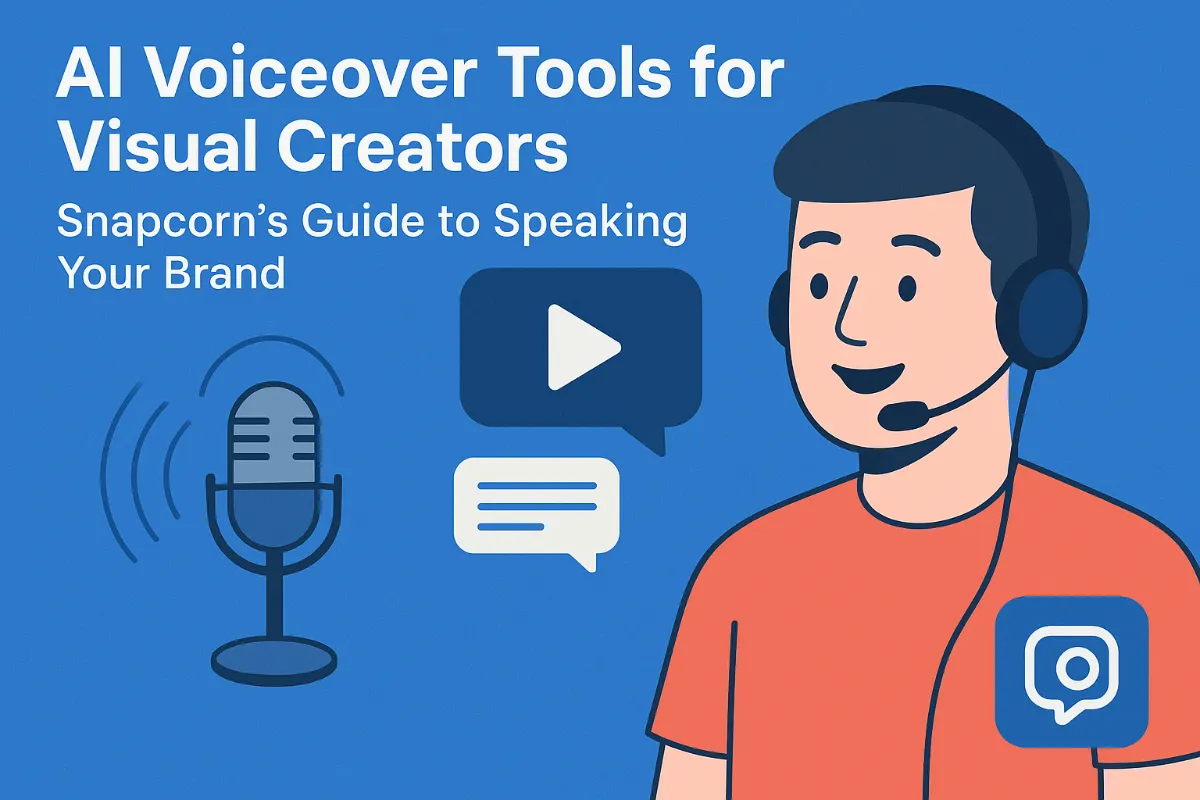Unlocking AI: Explainable AI (XAI) for Creative Image Editing
The Rise of AI in Creative Photography: A Black Box?
AI's integration into creative photography is rapidly changing how images are edited and enhanced. (AI in Photography: Transforming Creativity and Workflow - Pixlr Editor) However, this progress introduces a critical question: Are we comfortable with AI operating as a "black box," where the reasoning behind its actions remains unclear?
AI-powered tools are becoming essential for photographers, streamlining tasks from basic adjustments to complex manipulations. Many photographers now rely on AI to enhance image quality and optimize their workflow. (AI Revolutionizes Modern Photography: Enhance Your Skills) AI is used in various applications:
- Background removal: Quickly isolating subjects from distracting backgrounds.
- Image upscaling: Increasing resolution without significant quality loss.
- Colorization: Adding color to black and white photos.
- Restoration: Repairing damaged or old photographs.
Traditional AI models often operate as "black boxes," making it difficult to understand their decision-making processes. (What Is Black Box AI and How Does It Work? - IBM) Explainable Artificial Intelligence (XAI) 2.0: A Manifesto of Open Challenges and Interdisciplinary Research Directions notes that understanding these black-box models is paramount in diverse real-world applications. Photographers may not know why an AI tool made a specific change to an image, leading to mistrust or uncertainty. This lack of transparency can hinder creative control, limiting the ability to fine-tune results.
For photographers to fully embrace and trust AI, explainability is critical. Transparency builds trust, making photographers more likely to adopt AI tools if they understand how they work. Explainability allows photographers to fine-tune AI-driven edits and achieve their desired artistic vision. Understanding AI's impact on images helps photographers avoid unintended biases or misrepresentations.
As Understanding Explainable AI (XAI): Beginner’s Guide for 2025 explains, transparency integrated into explainable ai models helps build trust, ensure fairness, and enhance accountability.
The next section will delve into the core principles of explainable ai and their specific applications in creative image editing.
What is Explainable AI (XAI)? Shedding Light on AI Processes
Explainable AI (XAI) is like giving AI a glass body, allowing us to see how it thinks. It's about making AI's decision-making more transparent and understandable to humans.
XAI provides insights into how AI models arrive at their conclusions. By revealing the factors that influence their decisions, it helps us understand why an AI tool suggests certain edits or enhancements. XAI methods are applicable to various AI models, including those used in image editing.
For photographers, XAI offers several key principles that enhance creative control and trust:
- Interpretability: Understanding how an AI model processes image data and generates edits is crucial. This allows photographers to see the AI's "thought process" and ensure it aligns with their artistic goals.
- Transparency: Revealing the specific features or patterns that the AI model focuses on during editing is essential. This helps photographers understand what the AI considers important in an image.
- Trustworthiness: Building confidence in the AI tool's ability to produce reliable and unbiased results is vital. Photographers need to trust that the AI will enhance their images without introducing unwanted artifacts.
- Fairness: Ensuring the AI tool does not discriminate based on protected characteristics (e.g., skin tone) is a critical ethical consideration. XAI can help identify and mitigate potential biases in AI-generated edits.
- Accountability: Being able to trace errors and improve the AI's reliability by understanding the root cause of any issues.
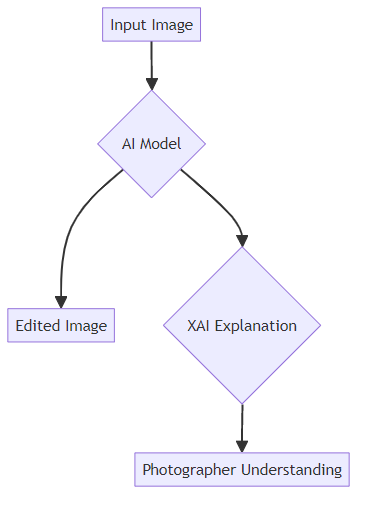
XAI offers numerous benefits tailored to the needs of professional photographers:
- Enhanced creative control: Photographers can leverage XAI to guide AI-driven edits and achieve their artistic vision. Understanding the AI's reasoning allows for targeted adjustments and refinement.
- Improved image quality: Understanding AI's decision-making allows for targeted adjustments and refinement, leading to higher-quality images that meet the photographer's specific standards.
- Reduced bias and ethical concerns: XAI helps photographers identify and mitigate potential biases in AI-generated edits. This ensures fair and accurate representation in their work.
- Greater efficiency and productivity: XAI streamlines the editing process by providing clear insights and guidance. This allows photographers to focus on the creative aspects of their work.
With XAI, photographers gain greater creative control, trust, and efficiency in their workflow. The next section will explore the specific techniques used in XAI for image editing.
XAI Techniques in Image Editing: Tools for Understanding AI's Decisions
AI is increasingly used in creative image editing, but understanding how these tools make decisions is key. Explainable AI (XAI) techniques help unlock the "black box" and provide insights into AI's reasoning.
Feature Importance Analysis identifies the image features that most influence AI-driven edits. Techniques like SHAP (SHapley Additive exPlanations) quantify each feature's contribution. For example, SHAP can determine which areas of an image are most important for background removal or upscaling. Photographers can then focus on refining those specific areas for better results.
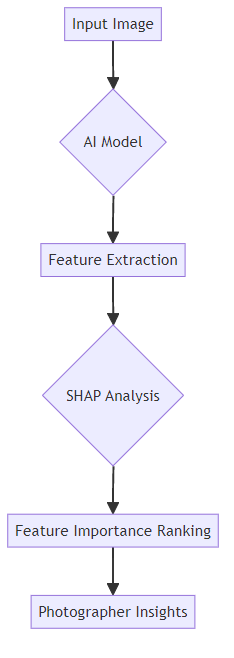
Attribution Maps, also known as Saliency Maps, visualize the areas of an image that the AI model focuses on during editing. These maps highlight the pixels or regions that contribute most to the AI's decision-making. For instance, a saliency map might show which parts of a portrait the AI uses to determine skin tone or facial features.

Counterfactual Explanations explore how small changes to an image would alter the AI's editing decisions. These explanations reveal "what if" scenarios that influence the AI's behavior. For example, understanding how changing the lighting in an image would affect the AI's colorization process.
These techniques empower photographers to understand and refine AI-driven edits. The next section will explore practical applications of these techniques in common photography tasks.
Practical Applications: XAI in Common Photography Tasks
Even the most seasoned photographers can find themselves puzzled by the decisions of AI-powered tools. Explainable AI (XAI) offers a way to demystify these processes, providing insights into how AI completes common photography tasks.
Background removal tools have become indispensable for photographers. XAI can provide a deeper understanding of how AI models identify and separate the foreground from the background.
- Understanding AI Logic: XAI reveals the specific image features, such as edges, textures, and color contrasts, that the AI uses to distinguish the subject from its surroundings.
- Refining Results: Photographers can use XAI to identify and correct edge artifacts or imperfect selections, ensuring a clean and professional final image.
- Improving Product Photography: Consider an e-commerce business using AI to remove backgrounds from product photos. XAI can help them understand why the AI struggles with certain products (e.g., those with complex shapes or similar colors to the background) and fine-tune the AI's parameters for better results.
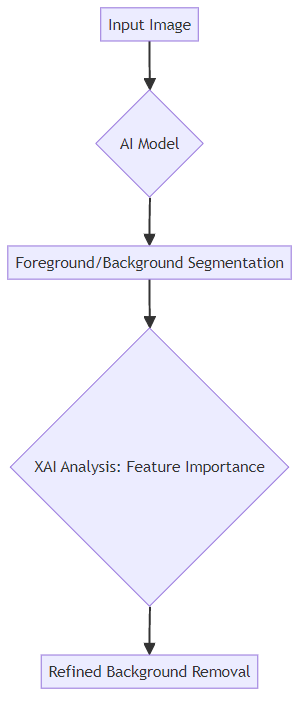
Image upscaling uses AI algorithms to reconstruct details and enhance image resolution. XAI helps photographers understand how these algorithms work and identify potential issues.
- Revealing Reconstruction: XAI can show which areas of the image the AI is focusing on to reconstruct details, such as fine lines or textures.
- Identifying Artifacts: The photographer can understand why the AI is hallucinating details or introducing artifacts, such as unnatural textures or distorted edges.
- Enhancing Old Photos: Suppose a photographer is using AI to upscale old, low-resolution photos. XAI can help ensure the AI accurately recreates facial features and other important details, producing natural-looking results.
AI colorization tools add color to black-and-white images, while restoration tools repair damage to old photographs. XAI can help photographers achieve historically accurate and personalized results.
- Understanding Color Choices: XAI can reveal how the AI determines which colors to apply, based on patterns in the image and learned associations from its training data.
- Correcting Errors: Photographers can use XAI to correct colorization errors, such as inaccurate skin tones or inappropriate colors for historical objects.
- Restoring Vintage Photos: Imagine a photographer restoring vintage family photos. XAI can help them understand how the AI is filling in missing details and ensure the colorization and restoration choices align with the photo's historical context.
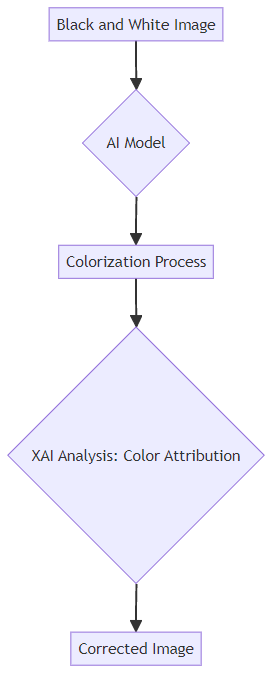
By using XAI, photographers gain greater insight into the AI's decision-making process, leading to more refined and accurate results.
Snapcorn: Empowering Photographers with Explainable AI Tools
AI can sometimes feel like magic, but what if you could see how the trick works? Snapcorn brings explainable AI (XAI) to your fingertips, empowering you to understand and control your image edits.
Snapcorn offers a suite of AI tools designed to enhance your photography, making complex editing tasks simple and transparent. These tools include background removal, image upscaling, and more, all powered by explainable AI.
- Discover how Snapcorn transforms your images with powerful AI, offering background removal, image upscaling, and more.
- Experience the freedom of free tools with no sign-up required, perfect for photographers who value efficiency.
- Unlock your creative potential with AI tools designed to enhance your images and simplify your workflow.
Background removal is a common task, and Snapcorn makes it easier than ever.
- Snapcorn's AI accurately identifies and removes backgrounds, saving you time and effort.
- Perfect for product photography and creating clean, professional images.
- Achieve seamless results with minimal manual adjustments.
Need to increase the resolution of your images? Snapcorn has you covered.
- Increase the resolution of your images without sacrificing quality.
- Ideal for printing, displaying on high-resolution screens, and enhancing details.
- Experience the difference with AI-powered upscaling that preserves clarity and sharpness.
Bring old photos back to life with Snapcorn's colorization and restoration tools.
- Bring old black and white photos to life with realistic colorization.
- Restore damaged images, removing scratches and imperfections.
- Preserve your precious memories with Snapcorn's AI-driven restoration tools.
Snapcorn's AI tools give you the power to enhance your images with ease and understanding.
The Future of XAI in Photography: Towards More Intuitive and Collaborative Tools
The world of photography is rapidly evolving, thanks to advancements in artificial intelligence. How can we ensure these AI tools are not only powerful but also transparent and collaborative?
Explainable AI (XAI) is essential for photographers to understand and trust AI-driven image editing. New XAI techniques are emerging to provide more comprehensive and user-friendly explanations, such as methods that offer more granular control over specific editing parameters or visual feedback on how changes are being interpreted. These advancements aim to make AI's decision-making processes more accessible to photographers.
- New algorithms focus on identifying and mitigating biases in AI-driven image editing, ensuring fairness across different types of photographs.
- Research is geared towards developing computationally efficient XAI methods that can be integrated into real-time photography workflows.
- Further work is going into providing more comprehensive and user-friendly explanations, so photographers of all skill levels can understand how AI is changing their images.
The design of XAI tools should cater to the specific needs of photographers, making the technology more intuitive and collaborative. By integrating XAI insights directly into the image editing workflow, photographers can seamlessly work alongside AI.
- XAI interfaces should be tailored to the preferences of photographers, providing clear and actionable insights.
- Integration into the image editing workflow should allow for seamless collaboration between the photographer and the AI.
- Actionable recommendations and guidance based on XAI analysis can provide clear next steps for the photographer.
XAI plays a crucial role in ensuring AI-powered image editing tools are fair, unbiased, and transparent. By promoting responsible AI practices within the photography industry, we can build trust and confidence in AI as a creative partner.
A trustworthy AI project showed that XAI can be used in interdisciplinary types of application problems, including psychology, statistics, and computer science, and may provide explanations that increase the trust of users. (Source: [Trustworthy AI Project - Example Link Needed])
- Fairness is important, ensuring AI tools do not discriminate based on protected characteristics (e.g., skin tone).
- Transparency builds trust, making photographers more likely to adopt AI tools if they understand how they work.
- Accountability is key for tracing errors and improving AI's reliability.
As AI continues to shape the future of photography, understanding and addressing the ethical considerations of XAI is critical. This understanding will help us realize AI as a trusted and valuable creative partner.
Conclusion: Embracing XAI for a More Creative and Ethical Future of Photography
Explainable AI (XAI) is more than just a trend; it's a necessity for the future of creative image editing. By embracing XAI, photographers can ensure their work is both innovative and ethically sound.
XAI offers photographers a range of benefits that enhance their creative process and build trust in AI tools.
- XAI empowers photographers with greater control, allowing them to understand and guide AI-driven edits. This transparency ensures the final image aligns with their artistic vision.
- It enhances image quality by allowing photographers to fine-tune AI's decisions, correcting errors and reducing biases. This transparency helps identify biases in decision-making processes, leading to more equitable outcomes.
- XAI fosters trust and collaboration between photographers and AI tools. By understanding how AI arrives at its conclusions, photographers can confidently integrate these tools into their workflow.
To fully realize the potential of XAI, photographers, developers, and the industry must take action.
- Photographers should explore and adopt XAI-powered image editing tools. These tools offer a deeper understanding of AI's decision-making process, leading to more refined and accurate results.
- Developers should prioritize the development of more intuitive and user-friendly XAI interfaces. As Explainable Artificial Intelligence (XAI) 2.0: A Manifesto of Open Challenges and Interdisciplinary Research Directions explains, interdisciplinary cooperation is key to synchronizing research agendas and accelerating XAI in practical applications.
- The industry should advocate for ethical AI practices, ensuring fairness, transparency, and accountability in AI-driven image editing.
XAI represents a philosophical shift towards more responsible and collaborative AI.
- XAI is not just a technical advancement, but a commitment to ethical AI. This ensures AI tools are fair, unbiased, and transparent.
- By embracing XAI, photographers can unlock new creative possibilities while upholding ethical standards. This allows for more responsible and trustworthy image editing.
- The future of photography lies in the harmonious partnership between human artists and intelligent machines.
Embracing XAI will pave the way for a more creative and ethical future in photography.


